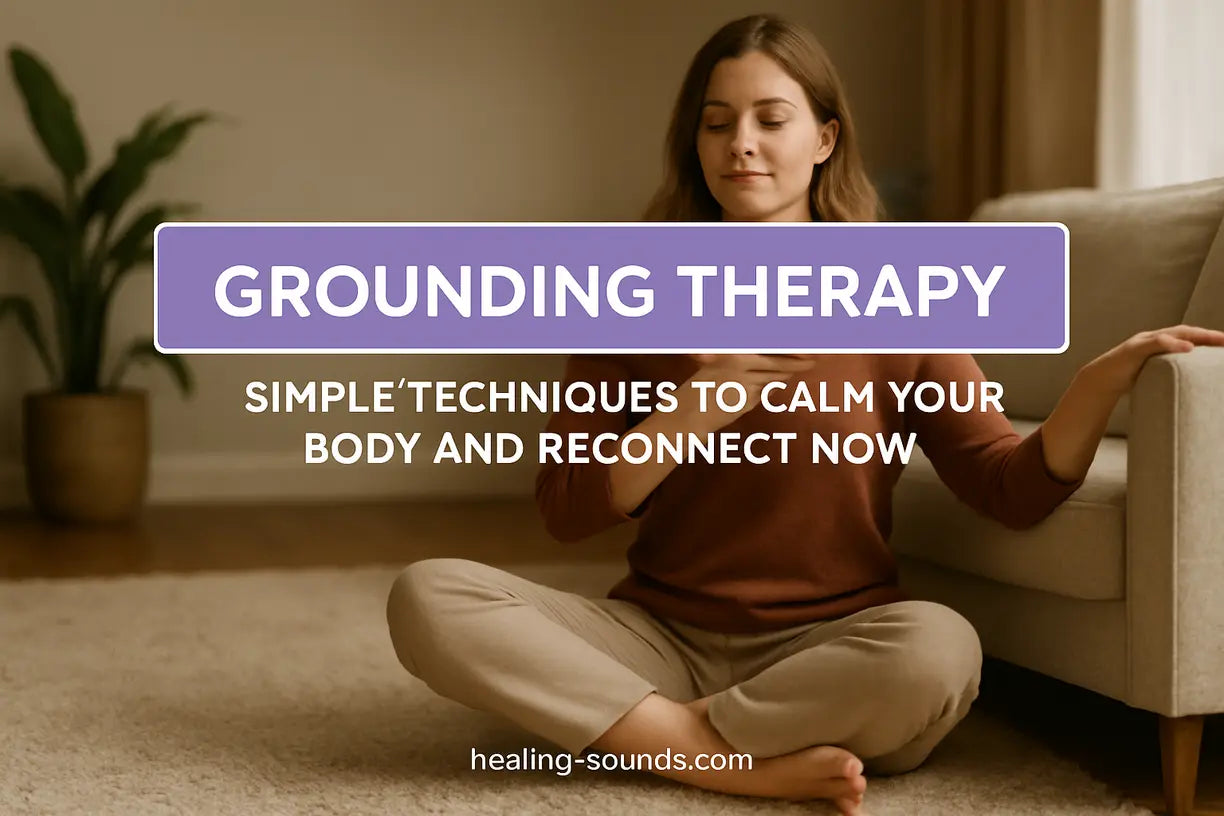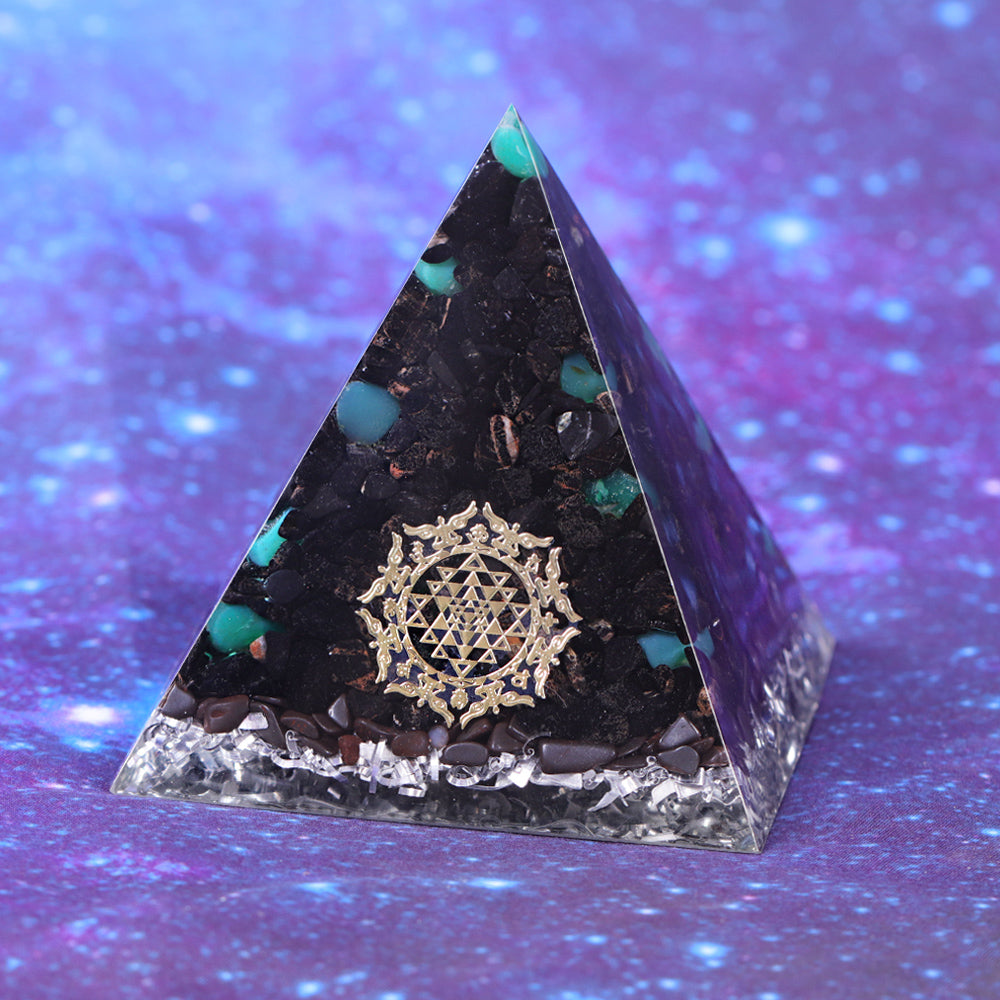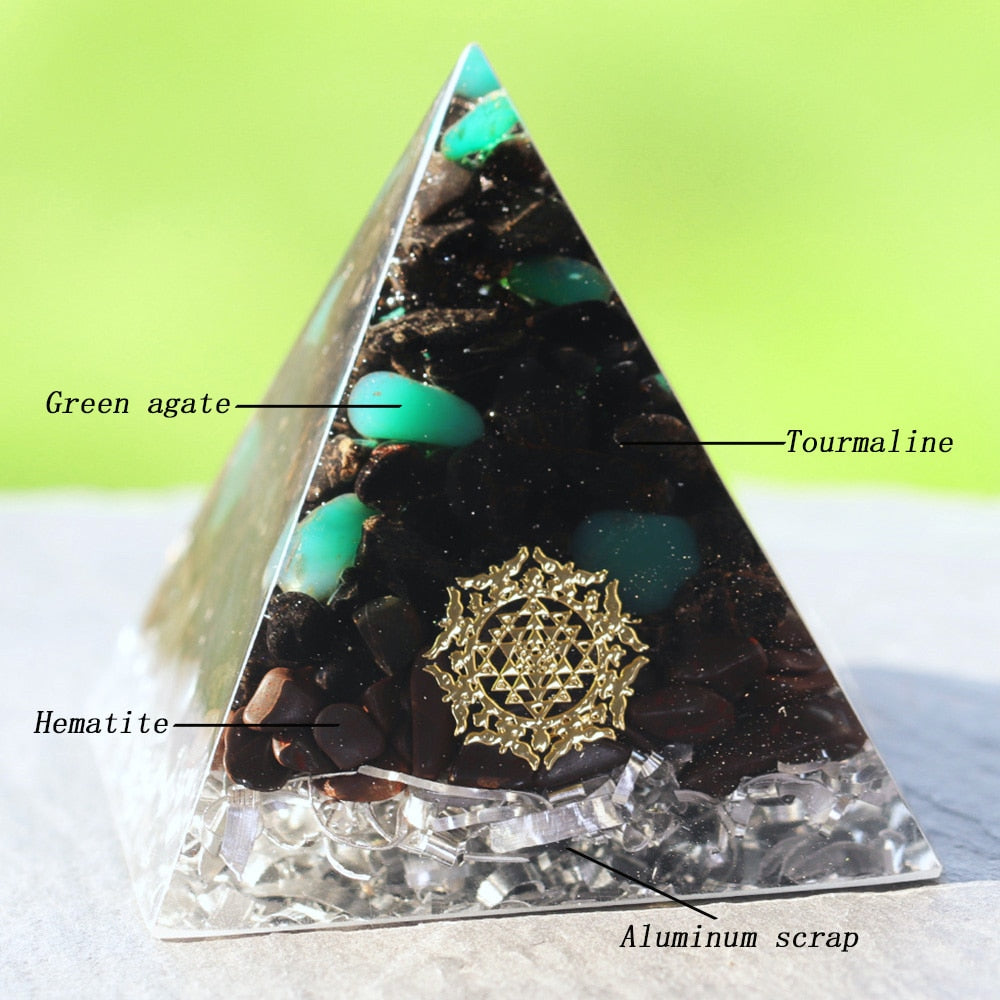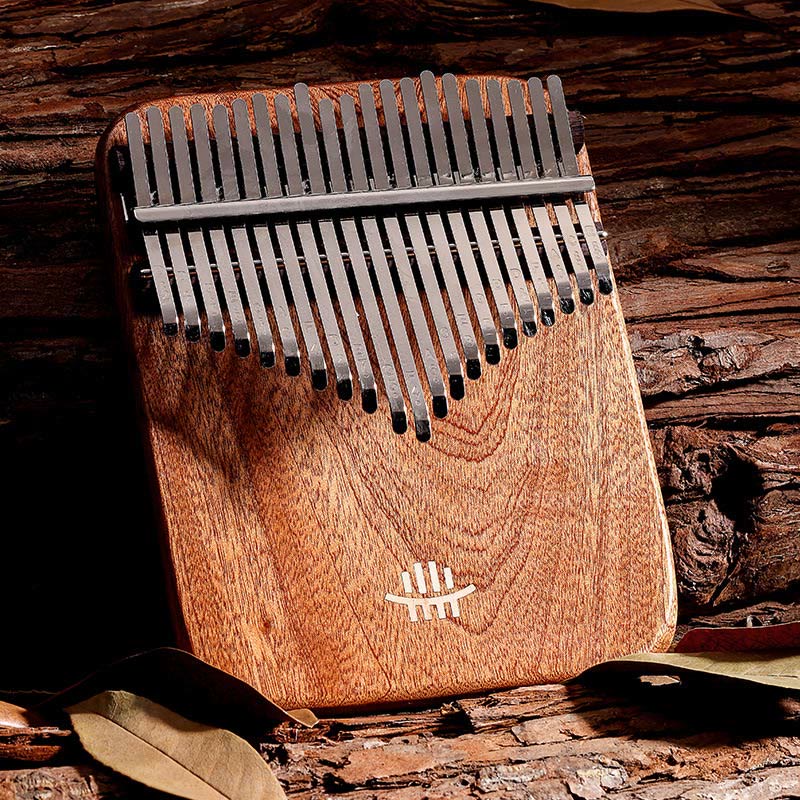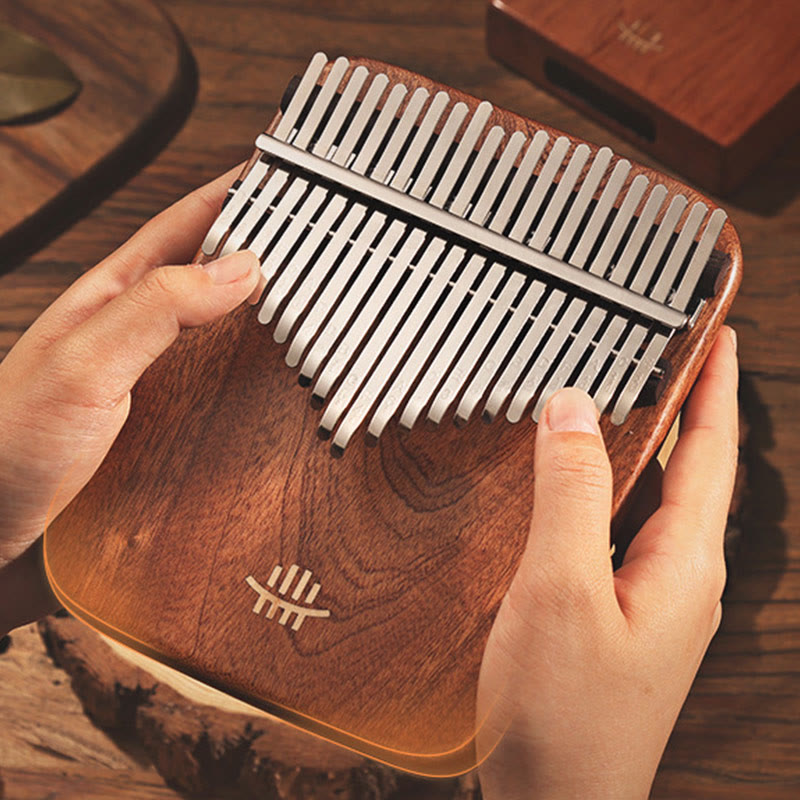Wenn Sie sich angespannt, zerstreut oder abgekoppelt fühlen, sind Sie nicht allein. Viele gesundheitsbewusste Erwachsene und Fachkräfte suchen nach praktischen Möglichkeiten, schnell wieder zu Ruhe zu kommen – insbesondere in Stress- oder Angstphasen. Dieser Leitfaden erklärt die Erdungstherapie verständlich, zeigt ihre Anwendung in der Beratung und im Alltag und verdeutlicht die Unterschiede zum Erden , damit Sie sichere, einfache Techniken wählen können, die für Sie funktionieren.
Am Ende werden Sie verstehen, was Erdung in der Therapie bedeutet, welche Hauptvorteile sie bietet, wie Sie präzise damit beginnen können (wie etwa die 5-4-3-2-1-Erdungsmethode) und welche unterstützenden Tools Sie zu Hause oder in Sitzungen verwenden können.
Was ist Erdungstherapie?
Die Grounding-Therapie umfasst eine Reihe von Hier-und-Jetzt-Regulierungstechniken , die helfen, die Aufmerksamkeit wieder auf den gegenwärtigen Moment zu lenken, wenn Angst, Panik, Dissoziation oder überwältigende Emotionen überhandnehmen. In der Beratung nutzen Therapeuten Grounding, um Klienten durch die Aktivierung der Sinne, der Atmung und des Körpers zu helfen, sich wieder in Sicherheit zu orientieren – so kann sich das Nervensystem beruhigen und das Denken klarer werden.
Im Gegensatz zur Vermeidung lenkt die Erdung die Aufmerksamkeit sanft auf das Reale und Gegenwärtige (Füße auf dem Boden, Atem im Körper, Bilder und Geräusche im Raum). Diese Fähigkeiten werden häufig in der kognitiven Verhaltenstherapie, der dysfunktionalen Verhaltenstherapie und der traumainformierten Behandlung eingesetzt, um Stress abzubauen, eine Abwärtsspirale zu verhindern und die Bewältigung zwischen den Sitzungen zu verbessern.

Erdung in der Therapie vs. Earthing: Was ist der Unterschied?
Die Begriffe „Erdung“ und „Erdungsmaterial“ werden oft synonym verwendet, sind aber nicht dasselbe:
| Aspekt | Erdung (in der Therapie) | Erdung (Kontakt mit der Erde) |
|---|---|---|
| Definition | Mentale und sensorische Techniken zur Neuorientierung in der Gegenwart und zur Regulierung von Emotionen. | Direkter Hautkontakt mit der Erde (barfuß im Freien) oder leitfähige Produkte, die zur Übertragung von Erdelektronen bestimmt sind. |
| Primäres Ziel | Reduzieren Sie Angst, Panik und Dissoziation; verbessern Sie Konzentration und Sicherheitssignale. | Mögliche physikalische/physiologische Auswirkungen (z. B. Entzündungen, Schlaf) werden untersucht. |
| Evidenzbasis | Wird in vielen Therapien eingesetzt und als Bewältigungsstrategie für die emotionale Regulierung unterstützt. | Es liegen erste Forschungsergebnisse vor; die Beweislage ist gemischt und entwickelt sich weiter. Seien Sie vorsichtig mit den Geräten. |
| So wird's gemacht | 5-4-3-2-1 Sinne, Orientierung, Atmung mit den Füßen auf dem Boden, taktiler Fokus. | Barfußlaufen auf natürlichem Boden; manche verwenden Erdungsmatten/-bänder. |
Einen praktischen Überblick über klinische Erdungstechniken finden Sie im Leitfaden der Anxiety and Depression Association of America zu Erdungstechniken bei Angstzuständen . Ein Forschungsüberblick zum Thema Erdung ist im Journal of Environmental and Public Health (PubMed) verfügbar.
Grundlegende Arten von Erdungstechniken (kurz)
- 5-4-3-2-1 Sinne: Achten Sie auf fünf Dinge, die Sie sehen, vier, die Sie fühlen, drei, die Sie hören, zwei, die Sie riechen, und eines, das Sie schmecken. Benennen Sie sie langsam, um die Aufmerksamkeit zu fesseln.
- Atmung mit Füßen auf dem Boden: Setzen Sie sich aufrecht hin, stellen Sie die Füße auf den Boden, spüren Sie die Druckpunkte und atmen Sie länger aus, um das parasympathische Nervensystem zu aktivieren.
- Orientierung: Drehen Sie vorsichtig Ihren Kopf und scannen Sie den Raum. Beschriften Sie dabei sichere Objekte und Farben. Erinnern Sie sich an Datum und Ort.
- Taktiler Fokus: Halten Sie einen kleinen Gegenstand (Stein, Perle, Stoff) und beschreiben Sie sich selbst seine Beschaffenheit, Temperatur und sein Gewicht.
- Temperatur/Spritzer: Kühles Wasser an den Handgelenken oder eine gekühlte Kompresse können eine zunehmende Erregung unterbrechen.
- Auditiver Fokus: Summen Sie einen gleichmäßigen Ton, lauschen Sie beruhigenden Geräuschen oder spielen Sie ein einfaches Instrument, um sich im Klang zu verankern.

Vorteile der Erdungstherapie
- Sofortige Beruhigung des Nervensystems: Lenkt die Aufmerksamkeit von rasenden Gedanken auf konkrete Empfindungen.
- Weniger Panik und Dissoziation: Aktuelle Signale helfen dem Gehirn, die aktuelle Sicherheit zu erkennen.
- Verbesserte Konzentration und Entscheidungsfindung: Ein ruhigerer Körper unterstützt klareres Denken unter Stress.
- Üben Sie überall: Die meisten Übungen sind diskret und tragbar und somit ideal für die Arbeit oder öffentliche Räume.
60-sekündige Erdungsübung: Stellen Sie Ihre Füße auf den Boden und drücken Sie die Zehen in den Boden (5 Sekunden). Atmen Sie 4 Sekunden lang ein und 6 Sekunden lang aus (drei Runden). Nennen Sie drei Objekte, die Sie sehen, und ein Geräusch, das Sie hören. Bewerten Sie Ihre Angst auf einer Skala von 0 bis 10.
[Sammlungs-Schieberegler]
Sanfte Hilfsmittel zur Unterstützung Ihrer Erdungspraxis
Obwohl für die Erdung keine Hilfsmittel erforderlich sind, stellen manche Menschen fest, dass akustische und taktile Anker die Konzentration erleichtern – insbesondere in Angstmomenten oder bei Therapie-Hausaufgaben. Hier sind einige unterstützende Optionen, die mit der sensorischen Erdung harmonieren.
194,18 Hz Stimmgabel - Synodischer Tag - Wurzelchakra
$39.90 $59.90
Stabilisieren Sie Ihre Energie mit der 194,18 Hz-Grundstimmgabel, ideal für eine schnelle Erdung bei Angstzuständen oder Therapie-Hausaufgaben.
Produkt entdeckenDie gleichmäßige, niedrige Frequenz einer auf den Grundton fokussierten Stimmgabel kann eine somatische „Ausgangsbasis“ bieten – nützlich, wenn Sie einen beständigen, einfachen Hinweis brauchen, um Ihre Aufmerksamkeit wieder auf die Gegenwart zu lenken.

Erdungsfreundliche Tools zum Ausprobieren zu Hause
$59.99
$79.99
Verankern Sie Ihren Raum mit dieser Orgonpyramide aus schwarzem Turmalin, um schwere Energie zu absorbieren und eine ruhige, geerdete Umgebung zu unterstützen. Mehr erfahren ➔
$159.90
$229.90
Beruhigen Sie das Nervensystem mit einem taktilen Kalimba-Dröhn – einem achtsamen Klang, der jederzeit und überall die sensorische Erdung unterstützt. Mehr erfahren ➔
Sicherheit, Risiken und wann Sie Hilfe suchen sollten
- Trauma-informierte Anwendung: Wenn eine Übung Stress oder Dissoziation verstärkt, unterbrechen Sie sie und wechseln Sie zu einem neutralen Signal (z. B. kaltes Wasser, Benennen von Gegenständen). Arbeiten Sie bei der Traumaverarbeitung mit einem qualifizierten Therapeuten zusammen.
- Medizinische Überlegungen: Wenn Sie Herzgeräte oder komplexe Erkrankungen haben oder leitfähige Erdungsprodukte in Betracht ziehen, wenden Sie sich zunächst an Ihren Arzt.
- Vorsicht bei Geräten: Erdungsmatten und -bänder variieren in Qualität und Wirksamkeit. Achten Sie auf Kontakt im Freien und Sicherheit. Vermeiden Sie Steckdosen oder selbstgebaute Geräte, bei denen Sie sich unsicher sind.
- Professionelle Unterstützung: Anhaltende Panik, schwere Dissoziation oder Selbstverletzungsdrang erfordern sofortige professionelle Hilfe.
Abschluss
Die Erdungstherapie ist eine praktische, evidenzbasierte Methode, sich wieder auf die Gegenwart zu konzentrieren und das Nervensystem zu beruhigen – zu Hause, in Sitzungen oder unterwegs. Beginnen Sie mit einfachen sensorischen Ankern wie 5-4-3-2-1 oder der Fuß-auf-Boden-Atmung und nutzen Sie unterstützende Hilfsmittel, die Ihnen die Konzentration erleichtern. Unsere ausgewählten Klang- und Tasthilfen helfen Ihnen, eine stabile, wiederholbare Routine zu entwickeln, auf die Sie sich auch in stressigen Zeiten verlassen können.
Häufig gestellte Fragen zur Erdungstherapie
Die Grounding-Therapie umfasst eine Reihe von Techniken, die den gegenwärtigen Moment ansprechen und die Sinne, die Atmung und den Körper aktivieren, um Angst, Panik oder Dissoziation zu reduzieren. Sie hilft Ihnen, sich wieder auf die Sicherheit im Hier und Jetzt zu konzentrieren, sodass sich Ihr Nervensystem beruhigen und Ihr Denken klarer wird.
Die gängige 5-4-3-2-1-Methode: Nennen Sie fünf Dinge, die Sie sehen, vier, die Sie fühlen, drei, die Sie hören, zwei, die Sie riechen, und eines, das Sie schmecken. Bewegen Sie sich langsam und atmen Sie gleichmäßig, um die Aufmerksamkeit im gegenwärtigen Moment zu verankern.
Es bezieht sich auf eine Gruppe von Fähigkeiten – wie sensorisches Benennen, Orientieren, Atmen mit den Füßen auf dem Boden und taktile Konzentration – die verwendet werden, um das Bewusstsein wieder in die Gegenwart zu bringen und emotionale Überforderung oder Dissoziation während und zwischen den Therapiesitzungen zu reduzieren.
Klinische Erdung ist im Allgemeinen sicher, manche Traumaüberlebende können jedoch bei bestimmten Reizen verstärkte Belastungen verspüren. Wenn eine Übung die Symptome verschlimmert, brechen Sie ab und versuchen Sie es mit einem anderen neutralen Anker. Seien Sie bei Erdungsgeräten vorsichtig und konsultieren Sie einen Arzt, wenn Sie medizinische Geräte oder Bedenken haben.
Nein. Die Erdung in der Therapie nutzt sensorische und atembasierte Praktiken zur Regulierung von Emotionen. Bei der Erdung geht es um direkten Kontakt mit der Erde (z. B. barfuß im Freien) oder leitfähigen Produkten. Die körperlichen Vorteile werden noch erforscht.

